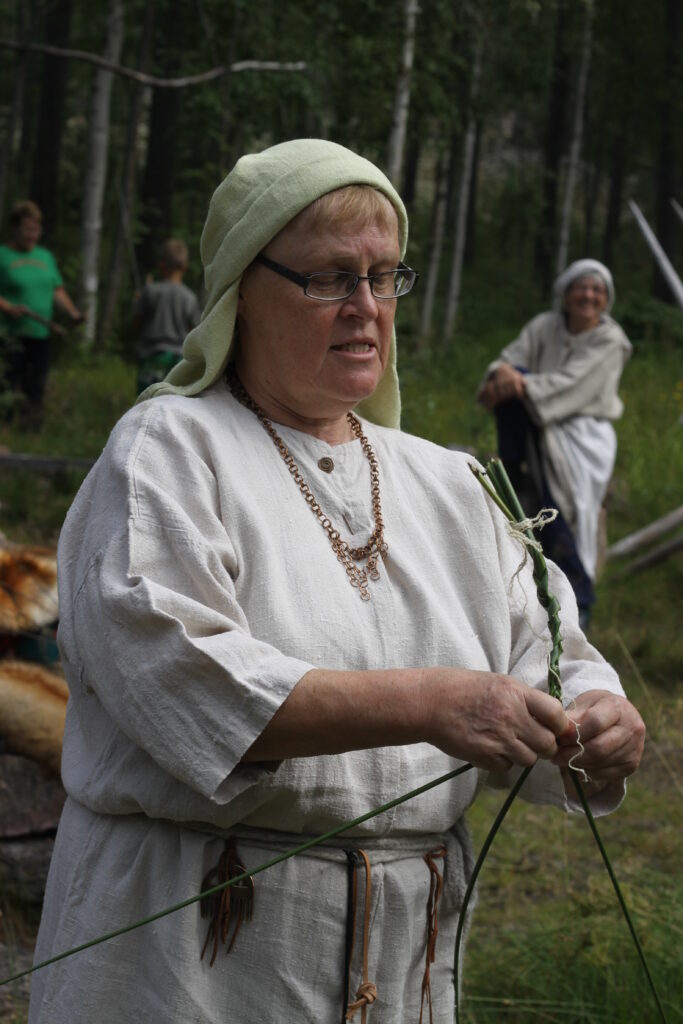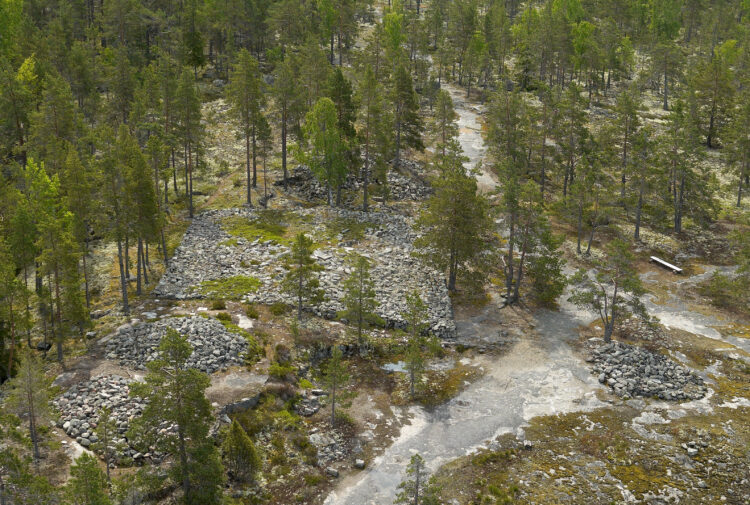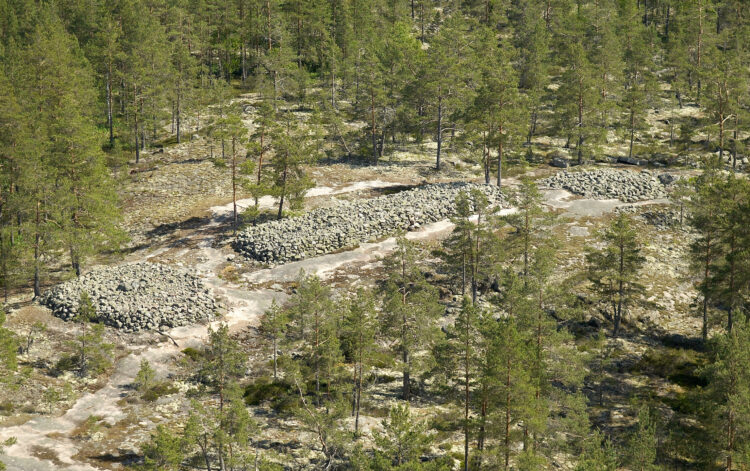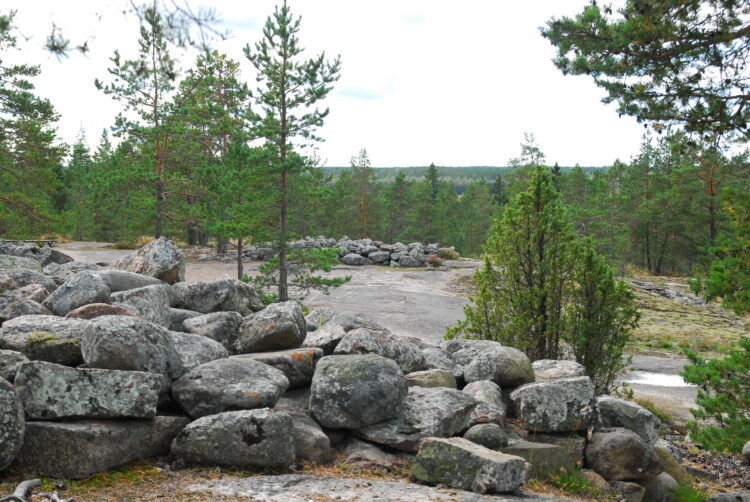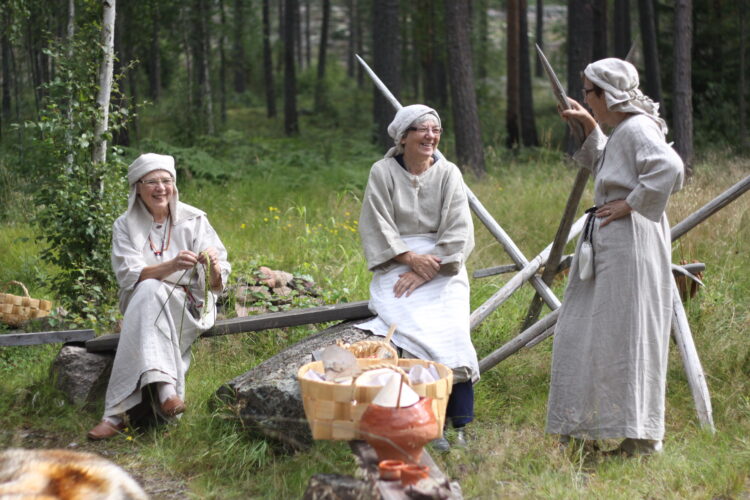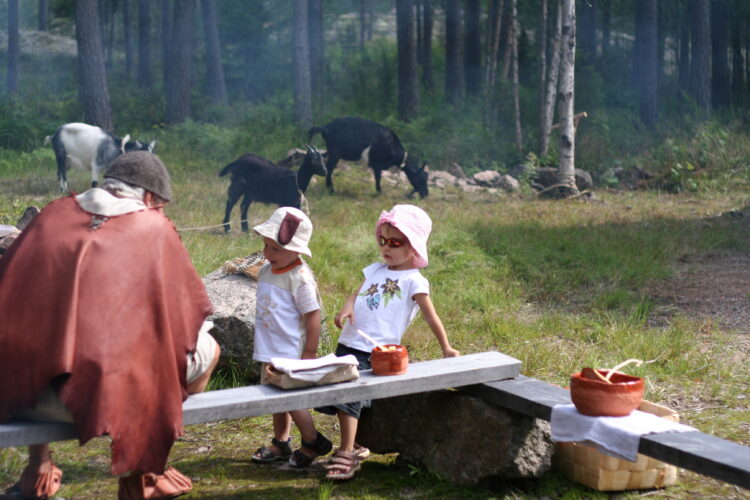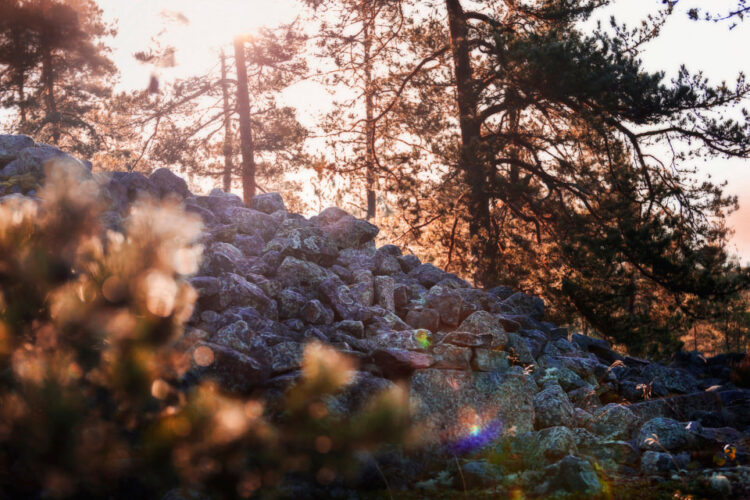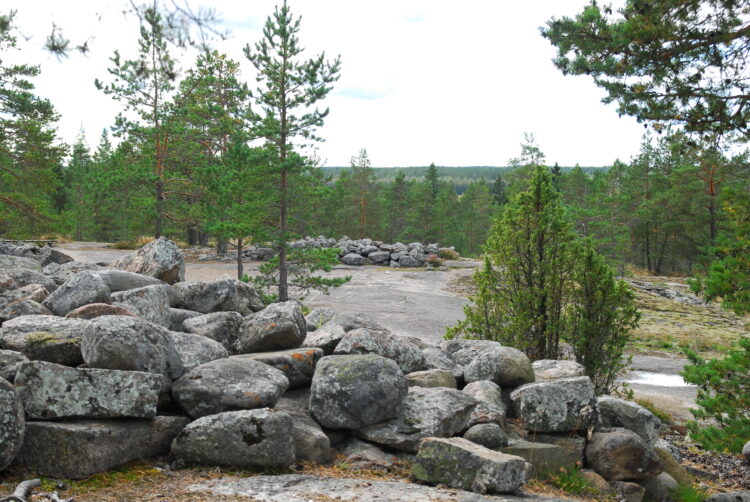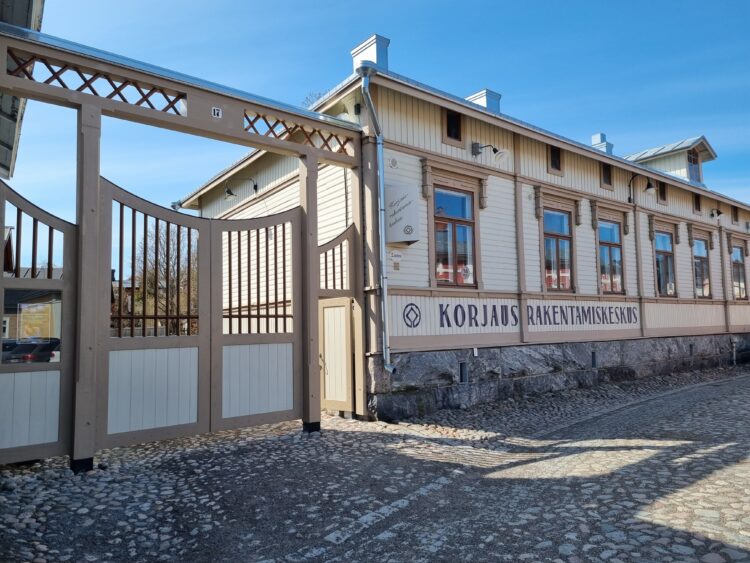Bronze Age and Sammallahdenmäki – learning material
Welcome to a journey back in time to the Bronze Age, more than 3000 years ago.
On this website you will find information and stories from the Bronze Age. The material provides interesting information for anyone interested in the subject. It is intended to support the teaching of history in primary schools. These pages show what life was like for people in the Early Bronze Age. The site covers life in the Bronze Age from six perspectives: the Bronze Age (introduction), housing, subsistence, food and utensils, religion, metals and trade.
Drawings: Maria Tuomialho, photos: Rauman kaupunki, texts: Päivi Hakanpää
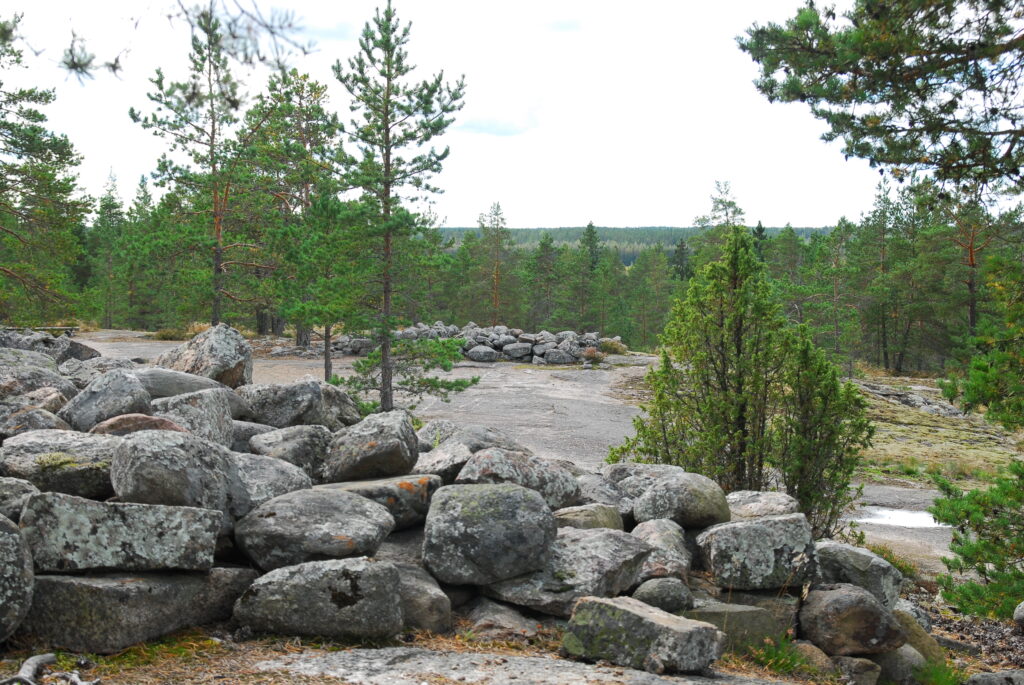
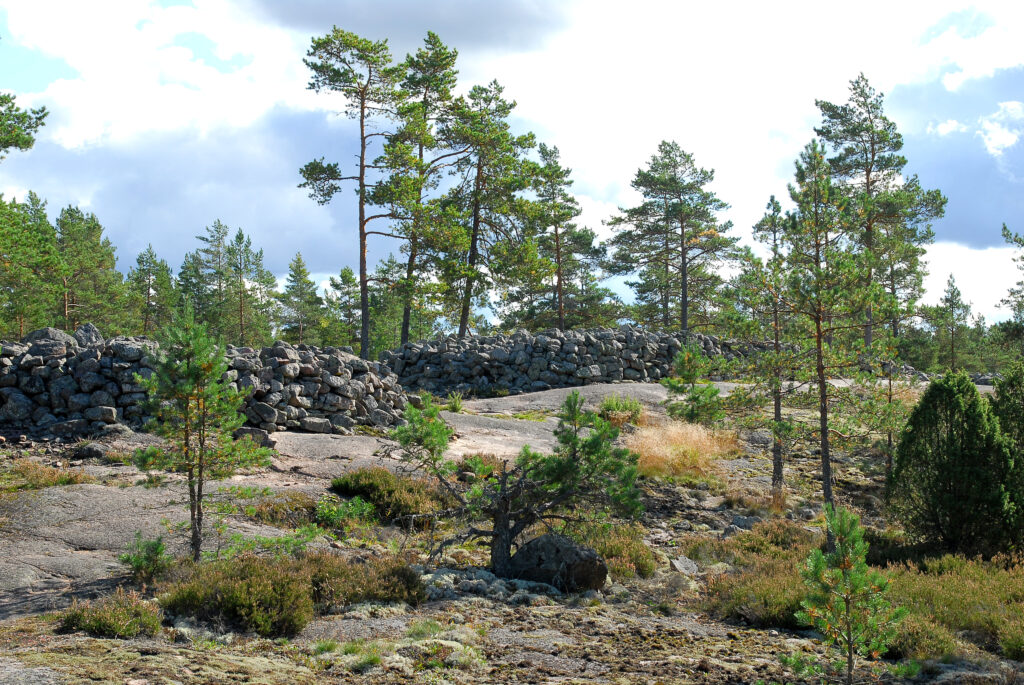
The secrets of Sammallahdenmäki
The exciting Bronze Age cemetery of Sammallahdenmäki is a fascinating site for adults and children alike. This unique Scandinavian site was inscribed on the World Heritage List in 1999 as Finland’s first archaeological site. The Sammallahdenmäki archaeological site is home to shallow, circular small cairns, large cairns with a conical shape and circular ring cairns dating from different periods of the Bronze Age (1500-500 BC). The most famous monuments in the area are the almost rectangular burial cairn of the Church Floor and the Long Ruin of Huilu. A rarity such as Kirkonlatta is not known elsewhere in Finland and is exceptional in Scandinavia. Sammallahdenmäki is located about 20 km from Rauma. The area, which is just under a kilometre long, contains 36 gravestones of varying shapes and sizes. This exotic World Heritage Site is worth visiting from afar!
Learning material
Each page consists of a story which deals with the beliefs, burials, livelihoods and habitation of people living in the Bronze Age. The storytellers are imaginary people whose families lived in the foothills of Kivikylä and who buried their deceased in the cairns of Sammallahdenmäki. The stories are based on research conducted on site in 2002-2004 and literature about Bronze Age.
In addition to the actual pages you can brose the glossary that provides explanations for terms and unfamiliar words used in the text. The glossary is in alphabetical order. In the end of each page there is also a link to exercise pages. You can also familiarise yourself with the literature and other websites about Early Metal Age listed in the reference list.
